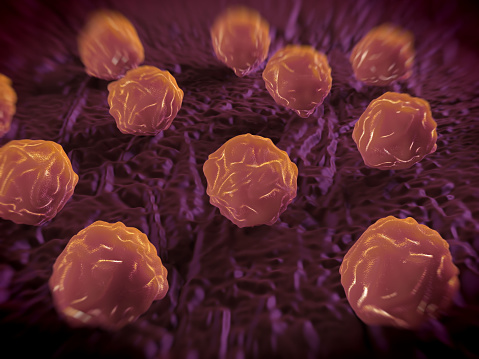 Only 30% of patients in need of bone marrow transplants will have family members with perfectly matched stem cells. According to a new study published in the journal Biology of Blood and Marrow Transplantation, researchers at the Department of Medical Oncology at Thomas Jefferson University found that half-matched bone marrow donors do just as well as the perfect-match donors. The study may be a major advancement for those without access to perfectly matched stem cell donors.
Only 30% of patients in need of bone marrow transplants will have family members with perfectly matched stem cells. According to a new study published in the journal Biology of Blood and Marrow Transplantation, researchers at the Department of Medical Oncology at Thomas Jefferson University found that half-matched bone marrow donors do just as well as the perfect-match donors. The study may be a major advancement for those without access to perfectly matched stem cell donors.
A bone marrow transplant is a procedure where damaged bone marrow is replaced with healthy bone marrow stem cells. The process is sometimes called a stem cell transplant procedure since stem cells in the blood are being transplanted, and not bone marrow tissue. The transplant is often recommended for life-threatening blood cancers, such as lymphoma and leukemia. It is also the therapy given for bone marrow failure diseases like aplastic anemia, and other genetic or immune system diseases.
In a bone marrow transplant, the damaged bone marrow is destroyed by radiation therapy or chemotherapy, and then the bone marrow is replaced with the stem cells. During the procedure, the stem cells are typically obtained from a sibling with a perfect stem cell match to the patients. This method is thought to decrease the chance for rejection or other complications.
Dr. Neal Flomenberg, senior study author and chair of the Department of Medical Oncology at Thomas Jefferson University, comments: “This is the first study to compare the gold standard to a half-match using an identical protocol. The field has debated whether the differences in outcomes between full and partial matches were caused by the quality of the match or by all the procedures the patient goes through before and after the donor cells are administered. We haven’t had a clear answer.”
For the study, researchers compared three-year outcome data from half-matched donor recipients with perfect-match donors. With the infrequency of perfect donor matches, half-match donors are more readily available among the patient’s relatives, and they can be donated within days.
Donors received the Thomas Jefferson University two-step protocol. The two-step method uses stem cells harvested from the blood. This method helps physicians control the number of immune cells called T cells. These cells will fight cancer and replenish the blood supply.
It is a two-step process that involves first administering the T cells and giving the drug cyclophosphamide that prevents the cells from overreacting. Finally, the stem cells are given to refill the immune system of the patient.
Researchers discovered that an estimated 70% of patients from both groups were alive and cancer-free three years after receiving the transplant.
Dr. Sameh Gaballa, the study’s first author and assistant professor in the Department of Medical Oncology, comments on the study findings: “The results of the current study are certainly encouraging, and suggest that outcomes from a half-matched related donor are similar to fully matched donors.”
“It might be time to reassess whether half-matched related transplants can be considered the best alternative donor source for patients lacking a fully matched family member donor. For that, we’ll need more evidence from a randomly controlled prospective trial, rather than studies that look at patient data retrospectively, to help solidify our findings here,” adds Gaballa.
Sources for Today’s Article:
S. Gaballa, et al., “A 2-Step Haploidentical Versus A 2-Step Matched Related Allogeneic Myeloablative Peripheral Blood Stem Cell Transplantation,” Biol Blood Marrow Transplant September 25, 2015, doi: 10.1016/j.bbmt.2015.09.017.
“The perfect match might be the imperfect one,” EurekAlert! web site, October 7, 2015; http://www.eurekalert.org/pub_releases/2015-10/tju-tpm100615.php.
“What is Stem Cell/Bone Marrow Transplantation?” Cancer.net web site; http://www.cancer.net/navigating-cancer-care/how-cancer-treated/bone-marrowstem-cell-transplantation/what-stem-cellbone-marrow-transplantation, last accessed October 7, 2015.
